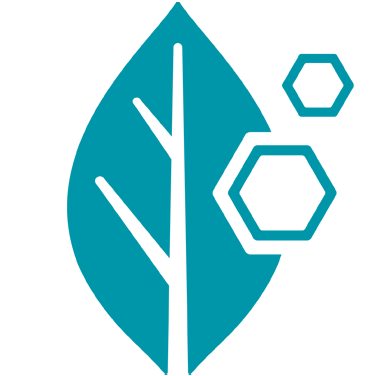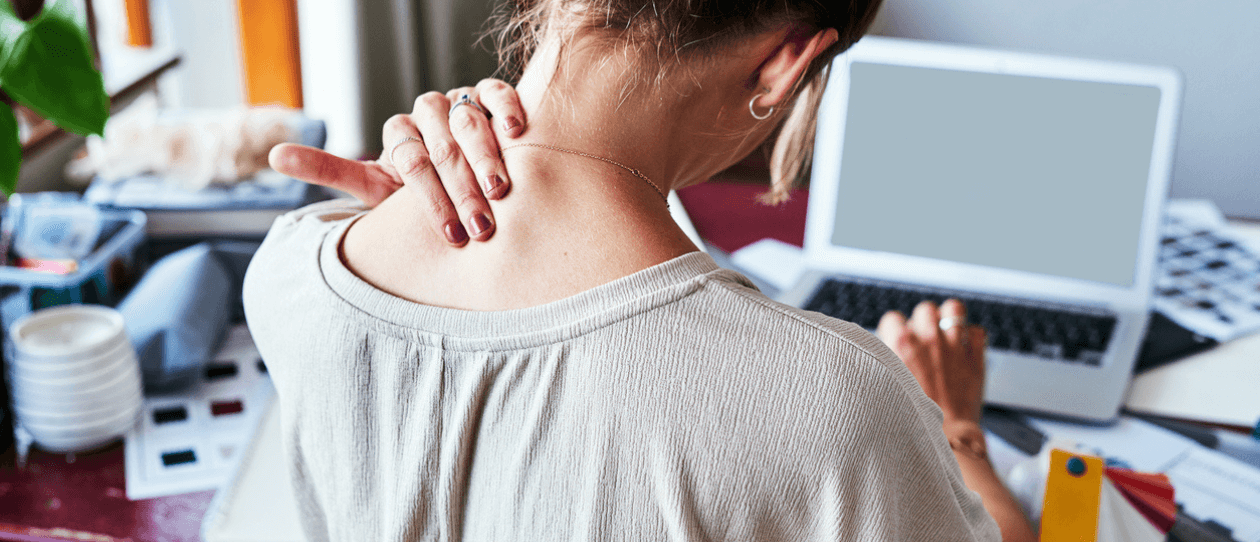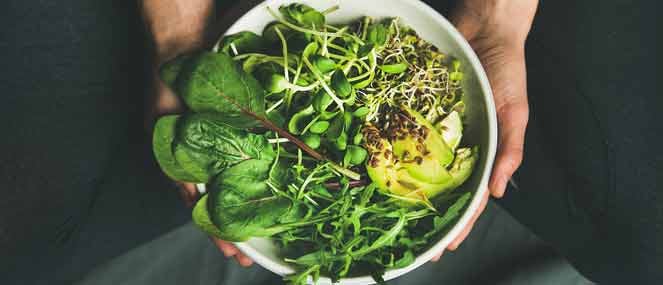
- Health hub/
- Arthritis, joint, bone & muscle/
- Muscle pain in the neck, back and shoulders


Neck muscle pain
Neck pain can be felt around the spine beneath your head, and you may have trouble moving your neck.
If neck pain involves nerves, such as a muscle spasm pinching on a nerve, you may feel numbness, tingling, or weakness in your arm, hand, or elsewhere.
Neck pain is very common and your chance of developing it increases with age. The pain from your neck and upper back is often felt at the back of the shoulder joint or through to the outside of your upper arm.
However, it’s important to note that sudden shoulder pain can be a sign of a heart attack. Call Emergency Services if you have sudden pressure or crushing pain in your shoulder, especially if the pain starts in your chest, jaw, or neck.
Back muscle pain
Because the back bears much of the weight while running, walking or standing, strains and sprains are common in this area.
The spine is a complex structure made up of 24 small bones called vertebrae stacked on top of each other. Discs sit between each vertebra to act as cushions and give your spine flexibility. Vertebrae are joined together by small joints called ‘facet’ joints. These joints allow you to move and bend your back. Ligaments and muscles hold the spine together and provide structural support, which allows you to move.
Back pain can originate from any of these structures and usually stems from surrounding muscles, ligaments or joints.
Back pain symptoms may include pain, spasms, stiffness, tingling or numbness.
Possible causes of neck and back pain
Strains and sprains: Often the causes of neck and back pain are the same, coming from strain and sprain from everyday activities. For example, hunching over a desk for hours, having your computer monitor positioned too high or too low, lifting things too quickly or poor posture.
Aging: Over time, wearing down of joint cartilage and degeneration of the spine.
Injury: Trauma from sudden forced movement of the neck or head and rebound in the opposite direction (whiplash).
Mental stress: When we are stressed, we often tense and tighten our muscles, including the neck.
Other factors: Poor posture, being overweight, weak abdominal muscles can all affect spine posture and contribute to neck and back pain.
Treatment for back and neck pain
The remedies for neck and back pain are similar.
Ease the early intense pain with rest, ice, and heat
- It’s important to keep active and keep moving your neck as much as possible, or the muscles will get stiffer and this may prolong recovery. This can be done by gentle stretching and strengthening exercises. Your doctor or physiotherapist can show you how to do this gently and safely.
- Asking your doctor or pharmacist what over-the-counter painkillers or anti-inflammatory analgesic cream or gel may help in the meantime while you rest and let it heal. Massaging your neck can give short-term relief.
- Make sure you have a comfortable, supportive pillow to sleep on.
- Ensure your working environment is set up so that your neck isn’t fixed to one side for too long. You may need a footstool to ensure your hips and knees are level. You may also need to adjust the height of your computer screen at eye level to avoid hunching over.
- Avoid tasks such as lifting, pulling, punching, and repetitive bending and twisting for a few days. These can make your neck pain worse.
- If you cannot fully move your neck, you should not drive.
- Take breaks from sitting at a computer or watching TV.
How can neck and back muscle pain be prevented?
- Exercise regularly, for 30 minutes on most days, to keep your muscles strong, spine flexible and to prevent stress and tension to build in your muscles.
- Improve posture through exercises such as those found in yoga or Pilates. Simple posture improvements include sitting straight with shoulders held back, driving with arms on armrests, and avoiding carrying shoulder bags. Try not to slouch or to poke your chin out.
- Take particular care if you sit at a desk all day, by keeping your back supported, adjusting your computer monitor to eye level, so you don't have to continually look up or down. Make sure you take plenty of breaks throughout the day to stretch.
- A supportive pillow is also important to prevent neck pain.
- Perhaps you can schedule in massages at a regular interval to ensure relaxation of muscles.
- Engage in stretching exercises everyday especially before and after exercise.
Shoulder muscle pain
Anatomy of shoulder
Your shoulder is a complex, highly mobile structure made up of several components.
- Glenohumeral joint – where your upper arm bone (the humerus) connects with your shoulder blade (scapula).
- Acromioclavicular joint – where the top of your shoulder blade meets your collarbone (clavicle).
- The shoulder capsule keeps the head of the humerus in place in the joint socket. The joint capsule produces synovial fluid which lubricates the joint.
- A group of four muscles and their tendons, called the rotator cuff, stabilize the upper arm to the socket, giving the shoulder its wide range of motion.
Shoulder pain
You may feel it in any part of your shoulder, feel weakness in the shoulder or upper arm, reduced movement and pain when moving the shoulder.
Common causes of shoulder pain:
Rotator cuff inflammation
The rotator cuff allows your shoulder to move and keep it stable. The most common cause of shoulder pain is when rotator cuff tendons become inflamed or trapped in your shoulder.
Bursitis
Bursae are small, fluid-filled sacs located in joints throughout the body, acting as cushions between bones and the overlying soft tissues. Sometimes, excessive use of the shoulder leads to inflammation of the bursa between the rotator cuff and part of the shoulder blade.
Tendon Tear
Tearing of tendons such as a rotator cuff tear, may result from acute injury or degenerative changes in the tendons due to advancing age, long-term overuse and wear and tear.
Injuries and sprains
For example, a direct blow to your shoulder can result in the acromioclavicular joint being sprained. This happen for instance, in contact sports such as football.
Inflammation of the shoulder capsule
“Frozen shoulder” occurs when your shoulder capsule thickens, becomes inflamed, tight and difficult to move. There may also be less synovial fluid to lubricate the joint. This may occur if the shoulder has been immobilised due to surgery or injury.
Treatment for shoulder pain
In the case of an acute injury seek medical care as soon as possible. If the pain is less severe, it may be safe to rest a few days to see if it then heals. Heat and ice packs may provide temporary pain relief. Physiotherapy may be very helpful, providing exercises that aim to address stiffness and weakness. It will also include retraining the movements to your everyday activities that were aggravating your shoulder so that you can get back to what you were doing as much as possible. Learn proper exercises to stretch and strengthen your rotator cuff tendons and shoulder muscles.
Who to seek help from
See a doctor immediately if the pain was caused by an injury, a fall, or a blow. Also see a doctor if symptoms persist so they can conduct a thorough examination to determine cause and then treatment options.
A doctor may refer you to a specialist such as a physiotherapist, chiropractor or occupational therapist.
An occupational therapist may advise on how to carry out daily activities or provide aids and equipment to make everyday activities easier.
Blackmores’ Health Hub have a range of articles so you can increase your knowledge about related issues. The online Naturopath service is also available if you wish to discuss any of your health needs.




